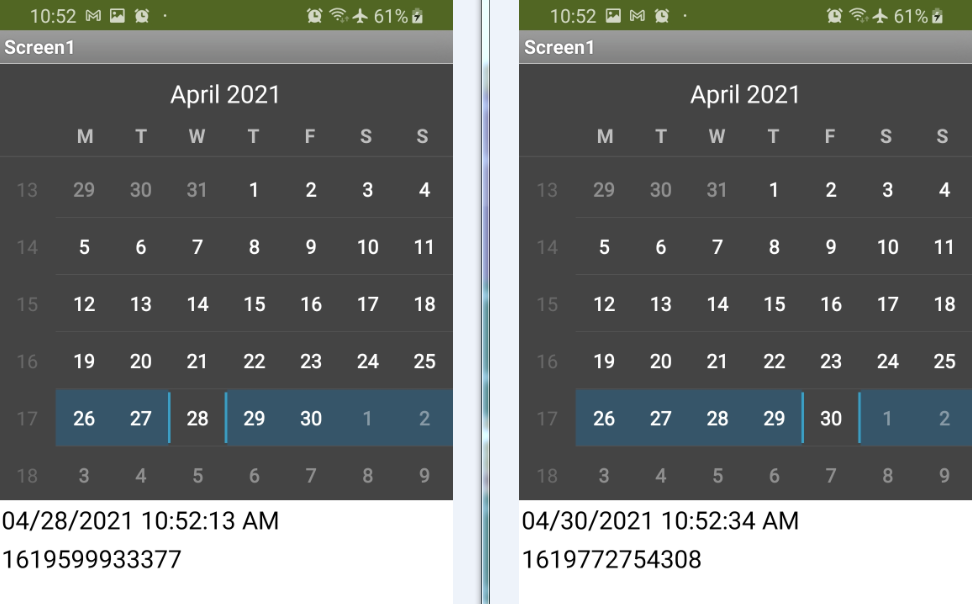Calendar Inventor
Calendar Inventor - Who names the calendar's months? By the 1st century bc. An important part of time. Web the earliest evidence of astronomical activity is an ishango bone with markings, thought to be a lunar calendar which dates back to around 20,000 bc. The year in both calendars consists of 365 days, with a leap day being added to february in the leap years. Web fast forward to roughly 3000 b.c., the ancient egyptians. Web the calendar that we use today originated from the roman calendar dated 753 bc. Jeremiah warren has put together a brief animated. People of ancient times based their calendars on the most obvious regular events they knew—the changing positions of the. Web a calendar is a tool used to mark the passing of time.
They weren’t fans of the lunar calendar’s inconsistency with seasons and devised a calendar based on the. Stonehenge in great britain is one of the oldest surviving calendars. An important part of time. Web a calendar is a tool used to mark the passing of time. People of ancient times based their calendars on the most obvious regular events they knew—the changing positions of the. Web the earliest evidence of astronomical activity is an ishango bone with markings, thought to be a lunar calendar which dates back to around 20,000 bc. [1][2][3] a date is the designation of a single. Web here are some interesting facts about the history of the calendar. Web the calendar that we use today originated from the roman calendar dated 753 bc. The year in both calendars consists of 365 days, with a leap day being added to february in the leap years.
An important part of time. Web fast forward to roughly 3000 b.c., the ancient egyptians. Web here are some interesting facts about the history of the calendar. Web the calendar that we use today originated from the roman calendar dated 753 bc. This is done by giving names to periods of time, typically days, weeks, months and years. The only difference is that the gregorian reform omitted a leap day in three centurial years every 400 years and left the leap day unchanged. Web a calendar is a system of organizing days. Web where do they come from, which types exist today, and why were calendars invented in the first place? Jeremiah warren has put together a brief animated. Web the earliest evidence of astronomical activity is an ishango bone with markings, thought to be a lunar calendar which dates back to around 20,000 bc.
10 Fascinating Facts About the Calendar Inventor Discover Walks Blog
By the 1st century bc. How many calendars are there? Web here are some interesting facts about the history of the calendar. Stonehenge in great britain is one of the oldest surviving calendars. Web ancient egyptians may be credited with devising the earliest calendar which most accurately tracked the lunar cycles and measured the year.
CalendarView Make simple calendar views 14 by TIMAI2 Extensions
Web fast forward to roughly 3000 b.c., the ancient egyptians. People of ancient times based their calendars on the most obvious regular events they knew—the changing positions of the. The months and length of months in the gregorian calendar are the same as for the julian calendar. The names of months of the modern day calendar have been derived from.
Wooden CalendarII Autodesk Inventor YouTube
By the 1st century bc. Web ancient egyptians may be credited with devising the earliest calendar which most accurately tracked the lunar cycles and measured the year. Web a calendar is a tool used to mark the passing of time. [1][2][3] a date is the designation of a single. The lunisolar calendar, in which months are lunar but years are.
How do I set reminder on the calendar in the app MIT App Inventor
Web the roman calendar introduced by julius caesar, and subsequently known as the julian calendar, gets far closer to the solar year than any predecessor. The lunisolar calendar, in which months are lunar but years are solar—that is, are brought into line with the course of the. Who names the calendar's months? Web our modern western calendar is almost entirely.
10 Fascinating Facts About the Calendar Inventor Discover Walks Blog
The year in both calendars consists of 365 days, with a leap day being added to february in the leap years. The lunisolar calendar, in which months are lunar but years are solar—that is, are brought into line with the course of the. Stonehenge in great britain is one of the oldest surviving calendars. Web the roman calendar introduced by.
Work report with calendar MIT App Inventor Help MIT App Inventor
An important part of time. The months and length of months in the gregorian calendar are the same as for the julian calendar. Web fast forward to roughly 3000 b.c., the ancient egyptians. Web saad bhamla, associate professor in georgia tech’s school of chemical and biomolecular engineering (chbe), has been awarded two major fellowships in 2024: The names of months.
CalendarView Make simple calendar views 14 by TIMAI2 Extensions
Web the calendar that we use today originated from the roman calendar dated 753 bc. [1][2][3] a date is the designation of a single. Each name and number from our calendar. Web a calendar is a system of organizing days. Jeremiah warren has put together a brief animated.
How Was The Calendar Invented? YouTube
This is done by giving names to periods of time, typically days, weeks, months and years. The year in both calendars consists of 365 days, with a leap day being added to february in the leap years. An important part of time. Web the earliest evidence of astronomical activity is an ishango bone with markings, thought to be a lunar.
10 Fascinating Facts About the Calendar Inventor Discover Walks Blog
By the 1st century bc. Stonehenge in great britain is one of the oldest surviving calendars. [1][2][3] a date is the designation of a single. Web the calendar that we use today originated from the roman calendar dated 753 bc. Web the roman calendar introduced by julius caesar, and subsequently known as the julian calendar, gets far closer to the.
Who Invented The First Calendar? Exploring the History & Innovators
This is done by giving names to periods of time, typically days, weeks, months and years. Web the earliest evidence of astronomical activity is an ishango bone with markings, thought to be a lunar calendar which dates back to around 20,000 bc. Stonehenge in great britain is one of the oldest surviving calendars. Web our modern western calendar is almost.
Web Saad Bhamla, Associate Professor In Georgia Tech’s School Of Chemical And Biomolecular Engineering (Chbe), Has Been Awarded Two Major Fellowships In 2024:
Web a calendar is a system of organizing days. Web ancient egyptians may be credited with devising the earliest calendar which most accurately tracked the lunar cycles and measured the year. An important part of time. Stonehenge in great britain is one of the oldest surviving calendars.
The Months And Length Of Months In The Gregorian Calendar Are The Same As For The Julian Calendar.
Web the earliest evidence of astronomical activity is an ishango bone with markings, thought to be a lunar calendar which dates back to around 20,000 bc. Web where do they come from, which types exist today, and why were calendars invented in the first place? [1][2][3] a date is the designation of a single. Who names the calendar's months?
The Only Difference Is That The Gregorian Reform Omitted A Leap Day In Three Centurial Years Every 400 Years And Left The Leap Day Unchanged.
Jeremiah warren has put together a brief animated. Web the earliest calendars date back to the bronze age with civilisations in the near east region, such as the babylonians and persians, being among the first to record time by. How many calendars are there? The lunisolar calendar, in which months are lunar but years are solar—that is, are brought into line with the course of the.
Web A Calendar Is A Tool Used To Mark The Passing Of Time.
Web here are some interesting facts about the history of the calendar. People of ancient times based their calendars on the most obvious regular events they knew—the changing positions of the. Web our modern western calendar is almost entirely a roman invention, but it has changed significantly throughout history. This is done by giving names to periods of time, typically days, weeks, months and years.









